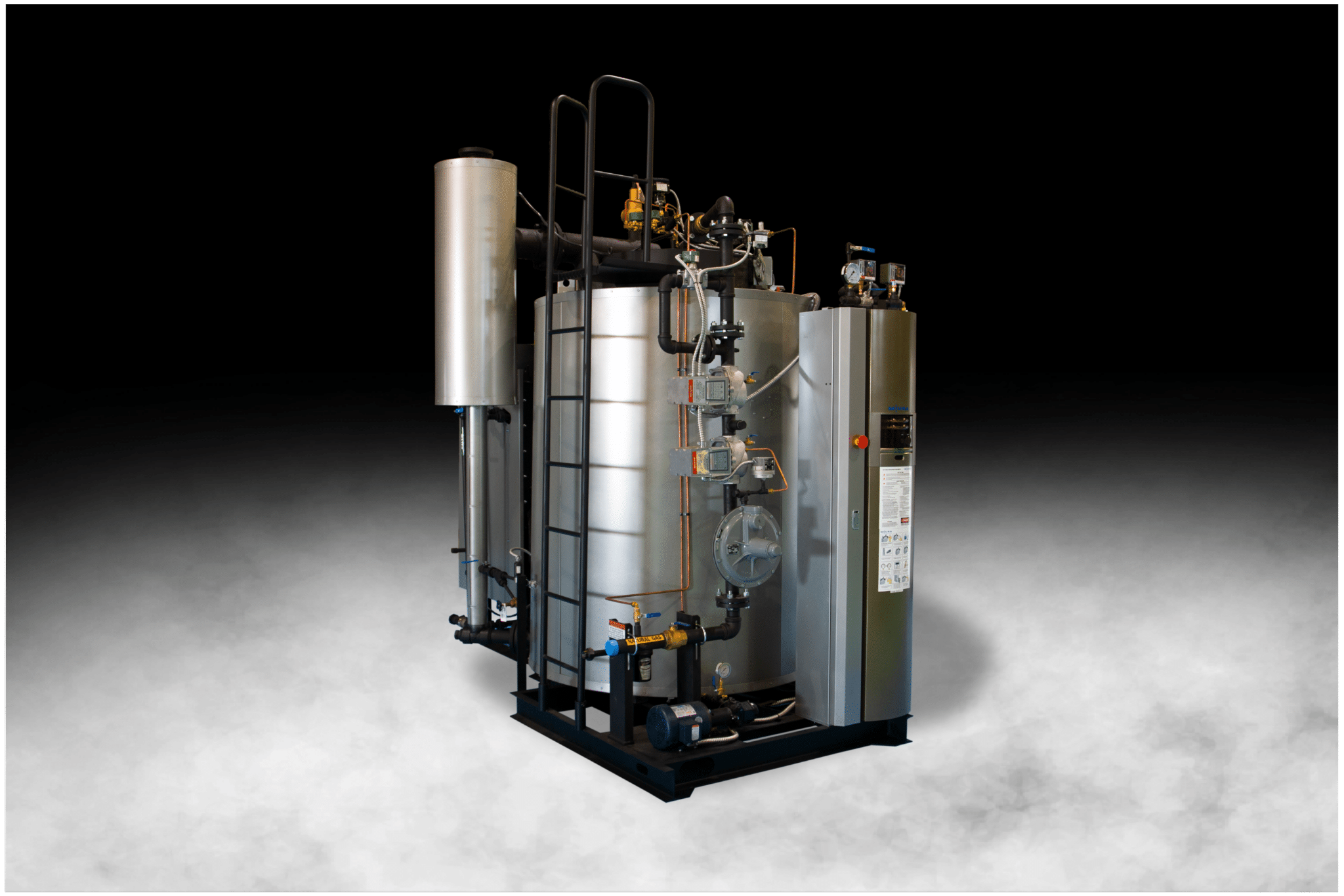How a Water Tube Boiler Works

One of the latest advances in steam production technology is the use of water tube boilers. This type of boiler is distinct from conventional boilers that use a fire tube system. Water-tube boilers are more efficient than fire tube boilers, generating more steam but using less fuel. They are also much safer than fire tube boilers and easier to manage when it comes to routine inspections and maintenance. So how exactly do these water tube boilers operate?
To answer this question effectively, we must first understand the main difference between the water tube and fire tube boiler systems. It all comes down to the relationship between the water and the heat source. With the fire tube boiler design, the water surrounds the heat source. In a water tube design, the heat source surrounds the water. Let’s elaborate on this difference and why it’s important.
A Conventional Fire Tube Design
With any boiler system, the creation of steam starts with the burner. When the fuel (typically natural gas, propane, or heating oil) is burned inside the furnace, it creates hot gases, which will, in turn, heat up the water. In a conventional fire tube boiler, the hot gases move from the firebox into heating tubes immersed by water in the tank. As the walls of the tubes are heated by the gas, the heat transfers into the water, eventually converting the hot water to steam.
While this design is quite common, it is also fairly inefficient for a couple of reasons. First, water is a slow heat conductor, and the more water in the tank, the longer it takes to heat. Not only does it take several hours of downtime to fire up a conventional boiler, but once you’ve reached the desired steam pressure, there’s little ability to adjust to changing demand. As a result, fire tube boilers typically use much more energy than is actually needed to get the job done, resulting in waste heat and higher fuel/water costs.
Second, there’s the issue of space. Conventional industrial boilers take up a lot of room by design, requiring a separate boiler room to accommodate them. Smaller companies, in particular, may find it to be a challenging and expensive problem to create that separate space.
Innovative Water Tube Design and how it works

Industrial water tube boilers have a much more efficient design that saves both space and energy. that flows throughout the boiler. With the water tube design, the water is surrounded by heated gases rather than the other way around. The hot gas moves from the firebox into the boiler’s main chamber.
In some cases, the gas will hit the back wall of the boiler and then bounce back toward the other end of the boiler. This creates a superheater effect inside the boiler, which can help reduce the amount of fuel needed to generate heat at optimal levels.
While this hot gas is moving throughout the boiler, it heats up the water inside a series of boiler tubes that sit in the middle of the boiler. These water tubes are shaped like a rectangle and roughly the length of the boiler itself. The tubes are also completely sealed and can withstand higher pressures so that no water can leak out and no fire or gas can penetrate the inside of the tube.
Essentially, the fire and gas produced by the burner hover around the water tubes, heating them and the water inside them externally. This is a notable difference from fire tube boilers, in which the water that’s being used to create steam will surround the heat source.
Since the heat is dispersed throughout the boiler and surrounds the water tubes, this design is not only more energy efficient but also requires less water. The water is also able to move and circulate throughout the tubes, which can put less stress on the boiler.
The water that has been heated inside the tubes rises to the top of the boiler into the steam drum. Sitting at the bottom of the steam drum is boiling water that continues to be heated by the fire and gas created by the burner. This boiling water ultimately becomes steam that can then be released by the boiler to be used for heating and other purposes. The process from a cold start to full steam typically takes minutes, rather than hours.
Water-tube boilers also have a downcomer tube that connects the steam drum to the feedwater drum. If the steam cools and condenses back into water droplets, that water can drain from the steam drum to the feedwater drum via the downcomer tube. This allows that water to re-enter the boiler’s water supply, go back into the tubes, and once again be turned into useful steam. Again, this helps to reduce the amount of water needed inside the boiler.
The entire process is not only done quicker than with traditional boilers but it can also be done in a much smaller area. As a result, water tube boilers have a much smaller footprint than conventional fire tube boilers, making room for more boilers that can further enhance efficiency. When used in a modular configuration, water tube boilers can be fired up and shut down to keep up with ever-changing steam-output demands, making them much more energy efficient.

